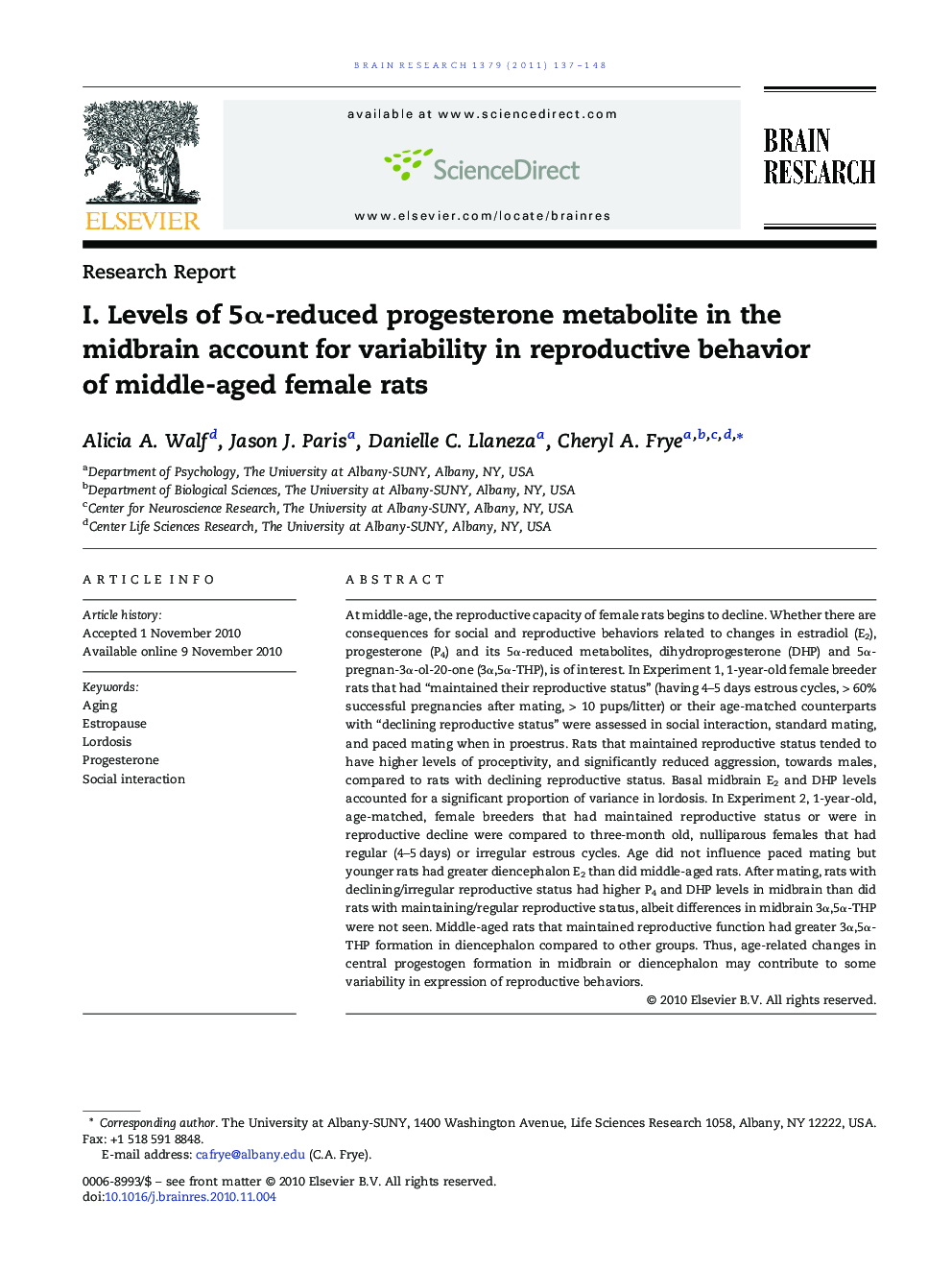| Article ID | Journal | Published Year | Pages | File Type |
|---|---|---|---|---|
| 4326130 | Brain Research | 2011 | 12 Pages |
At middle-age, the reproductive capacity of female rats begins to decline. Whether there are consequences for social and reproductive behaviors related to changes in estradiol (E2), progesterone (P4) and its 5α-reduced metabolites, dihydroprogesterone (DHP) and 5α-pregnan-3α-ol-20-one (3α,5α-THP), is of interest. In Experiment 1, 1-year-old female breeder rats that had “maintained their reproductive status” (having 4–5 days estrous cycles, > 60% successful pregnancies after mating, > 10 pups/litter) or their age-matched counterparts with “declining reproductive status” were assessed in social interaction, standard mating, and paced mating when in proestrus. Rats that maintained reproductive status tended to have higher levels of proceptivity, and significantly reduced aggression, towards males, compared to rats with declining reproductive status. Basal midbrain E2 and DHP levels accounted for a significant proportion of variance in lordosis. In Experiment 2, 1-year-old, age-matched, female breeders that had maintained reproductive status or were in reproductive decline were compared to three-month old, nulliparous females that had regular (4–5 days) or irregular estrous cycles. Age did not influence paced mating but younger rats had greater diencephalon E2 than did middle-aged rats. After mating, rats with declining/irregular reproductive status had higher P4 and DHP levels in midbrain than did rats with maintaining/regular reproductive status, albeit differences in midbrain 3α,5α-THP were not seen. Middle-aged rats that maintained reproductive function had greater 3α,5α-THP formation in diencephalon compared to other groups. Thus, age-related changes in central progestogen formation in midbrain or diencephalon may contribute to some variability in expression of reproductive behaviors.
Research Highlights► Rats that maintained reproductive status showed greater sexual receptivity. ► DHP levels in midbrain accounted for variance in lordosis. ► Rats with declining/irregular status had higher P4 and DHP in midbrain after mating. ► Middle-aged rats that maintained status had greater 3α,5α-THP in diencephalon. ► Age-related changes in progestogen formation may influence reproductive behaviors.
